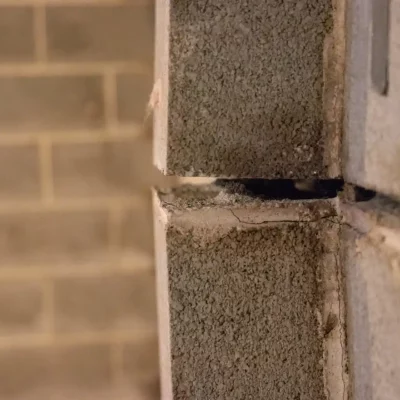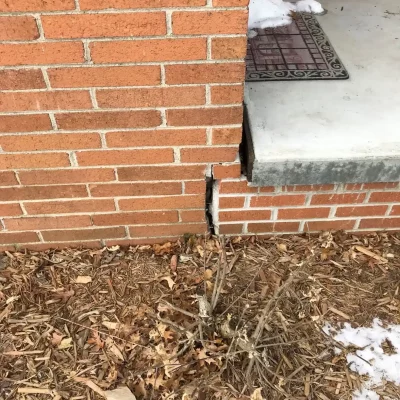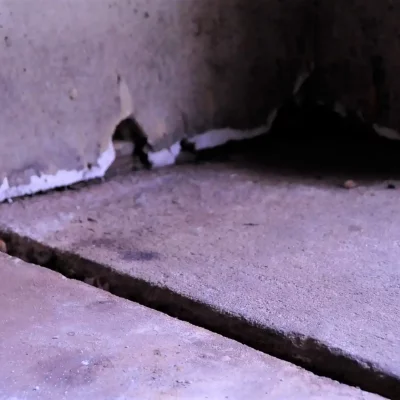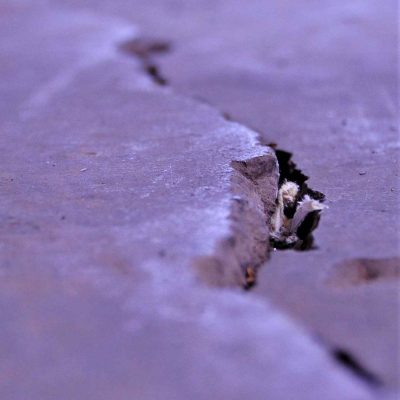What is Foundation Heave?
You may have heard of foundation settlement, but not foundation heave. A foundation heave is defined as the upward movement of the foundation due to moisture or soaked expansive soil.
The main reason for the foundation heave could be the underground aquifer, leakage in the ground, variations in soil or changes in moisture.
Foundation heave can massively impact the parts of your home, regardless of the foundation type. However, foundation heave is mostly experienced and noticeable in grade and slab foundations; these slabs are comparatively lighter and 4-6 inches thick, creating a nasty road map beneath your feet.
What are the Signs of Foundation Heave?
Knowing the difference between the signs of foundation heave and foundation sinking and settlement is important. Even if you cannot recognise the signs, you can hire an expert to do the work for you.
One thing to remember is that though a house is built to stay put, foundation heave causes intense pressure and stress on the house structure, leading to the deterioration of walls or tiles.
Here are the most notable signs that can cause structural and cosmetic damage to your house.
Cracked Window Frames and Brickwork
- While cracks caused by subsidence are mostly diagonal and horizontal,
- On the other hand, cracks caused by foundation heave are vertical.
- Therefore, if you experience foundation heave, hiring an experienced piling contractor would be ideal.
Lifted Patios and Paths
- One of the most significant signs of foundation heave is lifted patios or stone paths around the house.
- However, one thing to remember is that tree root ingression can also cause the patios, driveways or paths to lift and crack.
Door Frames Sticking
- Another major sign of foundation heave is sticking door frames.
- Foundation heave can make your doors inoperable by lifting them out of lines with their frames.
Cracks in the Basement Floor
- If you notice that your basement floor is lifted or uneven, the higher chances are that it is foundation heave rather than settlement or subsidence.
OTHER POTENTIAL SIGNS COULD BE:
- Tilted or askew slab sections
- Lifted and misaligned garden sheds.
- Cracks in brickwork or drywall.
Note: no matter the signs you notice, the best way to deal with the situation is to hire a professional repair specialist to prevent further damage.




What are The Causes of Foundation Heave?
Foundation heaves start beneath your house in the soil of your home. It is important to note that properties with denser foundations may experience settlement issues, while those with thinner foundations may experience foundation heaves.
Foundation heave occurs when the soil swells due to many factors that may include the following:
Stress Relief
Stress relief is when the soil is removed from an excavation, also known as overburden recovery. The pressure of layers below is relieved with stress relief, causing the soil to swell and heave upward.
Lack of Drainage
The lack of a proper drainage system in the house is a major cause of foundation heave. This can destabilise the soil under the foundation.
Though with heavier homes, lack of proper drainage leads to sinking but with lighter homes the soil will move upwards, causing damage and wall/tile deterioration.
Soil Saturation
One cause of soil saturation is a lack of proper drainage. However, there could be other issues, such as:
- Underground water sources
- Changes in the water table
- Flash floods
Snap Freezes
- Sudden and abrupt changes in the weather leads to foundation heave.
- One example of this is snap freeze which causes the water in the soil to expand; hence, putting pressure on the foundation.
How to Fix Foundation Heave?
Repairing a foundation heave requires a two-part approach:
- You remove the cause of the foundation by draining excess water in the soil.
- You strengthen the home’s existing foundation to resist the strain from above.
Some other solutions that may help include the following:
Yard Grading
- If your yard is misaligned and improperly graded, it will direct and funnel water towards the house instead of directing it away.
- If you live in an area that frequently encounters heavy rains, yard grading can help improve this issue.
Interior Drains
- Interior drains are pipes that are installed in the basement to collect and drain water that enters the cove or basement floor.
- Once the water enters the drains, it is redirected to a sump pump that drains the water out of the property; hence, keeping your foundation dry.
Helical Piers
- Helical piers are steel shafts that are installed in the damaged foundation.
- They are extremely easy and versatile to install and effectively help in correcting the bulges caused by foundation heave.
Concrete Patches
- Once you repair the foundation heave and even the floor, concrete patches can help in fixing the appearance of cracks to restore its optimal condition.

